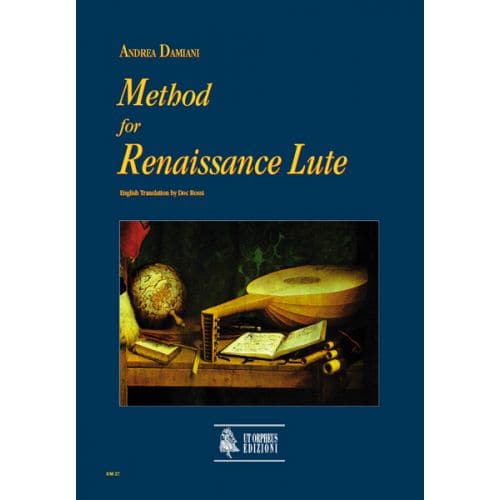
DAMIANI ANDREA - METHOD FOR RENAISSANCE LUTE (ENGLISH VERSION)
Ut Orpheus
43,60 €
Livraison 5,90 €
Vendu et expédié par Woodbrass
Autres vendeurs :
Seule offre disponible
Seule offre disponible
Description
Traduction Doc RossiCompositeur : Damiani AndreaInstrumentation : LuthPublication Date: 1999Series: Teoria e Didattica della Musica (Theoretical and Educational Texts)Pages: pp.208CONTENTS* Preface* Introduction* CHAPTER 1.TUNING AND TABLATURETuning - Tablature (French tablature - Italian tablature - Rhythm symbols - Fingering and other symbols) - Stringing and doubling - Tuning practice (Practical advice on tuning - Tuning problems) - Strings* CHAPTER 2.BASIC TECHNIQUESPosture and position of the lute - Right-hand position - Right-hand functions - Sound production (Positioning p - Forearm movement - Attack - Positioning i) - Alternating p and i - Finger articulation for polyphonic passages (Positioning p - Positioning i) - Preparatory exercises - Differences from guitar technique - Body control* CHAPTER 3.THE RIGHT HANDForearm and accentuation - Fingering* CHAPTER 4.THE LEFT HANDGeneral principals - Preparatory exercises - Avoiding stiffness - Differences from guitar technique - Hand coordination* CHAPTER 5.
SCALESRight-hand scale technique (Forearm movement - Finger articulation - Integrating the two techniques)* CHAPTER 6.EXERCISES FOR TWO LUTESExercises on a ground bass - Contrapuntal exercises - Articulation - Dances and ground basses* CHAPTER 7.SHIFTING LEFT-HAND POSITIONSFundamental principals - Position changes using the same finger - Position changes by substitution - Position changes by jump* CHAPTER 8.
EXERCISES FOR TWO LUTES WITH POSITION CHANGES* CHAPTER 9.RIGHT-HAND TECHNIQUE IN POLYPHONIC MUSICp-i articulation - Positioning m - Rest stroke with p - Left-hand positions and movement - m-i articulation - Combining p, i and m - Easy pieces in two voices - Two-voice scales* CHAPTER 10.COUNTERPOINTVoice progression and intervals - The species - Florid counterpoint - Imitation - Syncopation - Suspension* CHAPTER 11.
CONTRAPUNTAL PIECES IN TWO VOICES* CHAPTER 12.THREE VOICESThe right hand - Combining chords and single notes - Repeated chords and monophonic passages - Arpeggios - Chords and counterpoint* CHAPTER 13.CONTRAPUNTAL PIECES IN THREE VOICESTechnical aspects: three-voice scales, the barre - Contrapuntal pieces in three voices* CHAPTER 14.
CHORDS OF FOUR OR MORE NOTESThe ring finger (a) - Five- and six-note chords - Chords played with p* CHAPTER 15.IDIOMATIC LUTE COMPOSITIONSChords and divisions - Characteristics of lute composition* CHAPTER 16.TRANSFORMATION OF LUTE TECHNIQUE DURING THE 16th CENTURYEvolution of right-hand position - Exercises for m-i alternation* CHAPTER 17.
TECHNIQUEScales (Full-length scales in all keys - Scales with divisions) - Speed - Left-hand legato and ornamentation - The barre (Preparatory exercises - Barre exercises) - Scales in two and more voices (Two-voice scales - Three-voice scales) - Polyphonic patterns - Right-hand exercises* CHAPTER 18.RENAISSANCE PERFORMANCE PRACTICEInterpretation (Rhetoric - Sound quality - Rhythmic inequality) - Ornamentation (16th-century sources - The first half of the 16th century - The second half of the 16th century - The first half of the 17th century - The Elizabethans)* CHAPTER 19.TEMPERAMENTMeantone temperament - Equal temperament
Caractéristiques
- Référence
- 9790215305083
- Marque
- Ut Orpheus
- Vendeur
- Woodbrass
- Catégorie marchand
- Librairie > Méthodes et pédagogie > Guitare > Luth
- Type de produit
- Luth